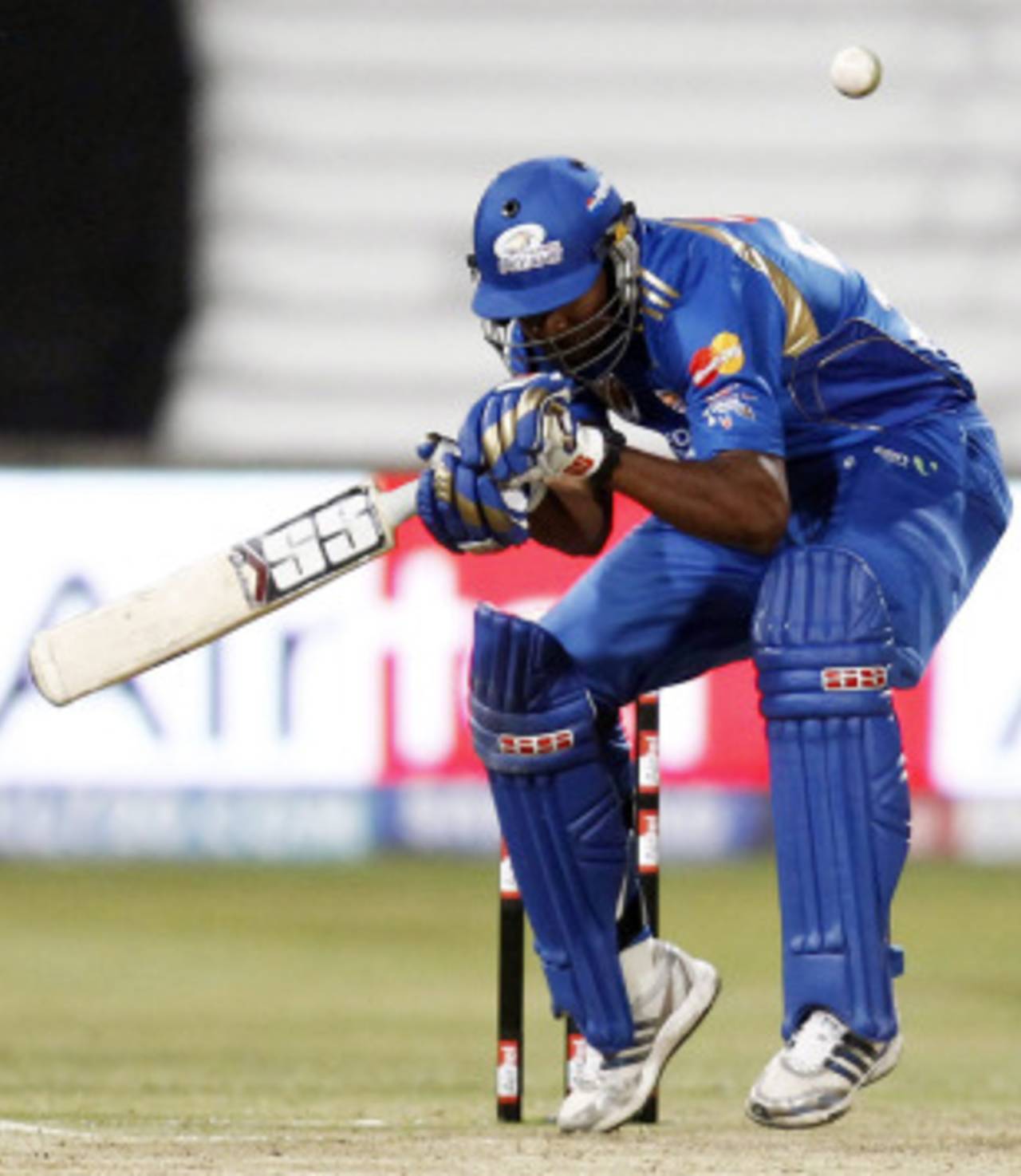Innovations in the Champions League
It was survival instinct that drove players to look for cutting-edge tactics at the recently concluded Champions League Twenty20

It wasn't only the subcontinent batsmen who struggled against short balls • Getty Images
Most teams had the fine-leg fielder inside the ring and pushed the square-leg fielder back to the boundary right from the beginning. This is not how teams have traditionally begun one-day innings, preferring instead to have the fielder beside the square-leg umpire save singles and the fine leg, though slightly squarer, back on the boundary.
There was plenty of the short-pitched stuff throughout the innings. Yes, the extra bounce on South African pitches may have encouraged the bowlers to bang it in short but that's not the only reason. Most batsmen, regardless of nationality, were in obvious discomfort against chin music. While the Central Stags from New Zealand used it to good effect against the Chennai Super Kings, Dwane Bravo bowled at least a foot shorter against South Australia. The more you see matches in these conditions, the clearer it becomes that it's not only the batsmen from the subcontinent who aren't great players of short-pitched stuff and that they have company. No bowler can get away with bowling just one-dimensional short-pitched stuff, though, but there is no harm in making the batsman smell leather every now and then.
The teams from South Africa and Australia have taught a lesson in batting to the rest of the sides only if they choose to notice. While the players from these countries are good off the back foot and play horizontal bat shots, they have shown the value of hitting straight down the ground with a vertical bat, as opposed to their counterparts from the subcontinent who are guilty of looking to score only square of the wicket. Yes, there's bounce to deal with but a half volley is a half volley on all surfaces and should be hit straight. Also, since teams keep the mid-off and mid-on fielder really wide on bouncy surfaces, there's a huge gap in the front to get maximum value for shots. Indian teams are yet to utilise this to its full potential.
The slower ball is an important delivery in a fast bowler's armoury but just taking the pace off is not enough, especially on bouncy South African tracks. One could get away with rolling the fingers across the ball in the subcontinent because the lack of pace and bounce makes it even slower after pitching. Ergo you could get away with it but that isn't the case on bouncy surfaces. A poorly executed slower ones sits up to get hit and we have seen many disappearing into the stands in this tournament.
Former India opener Aakash Chopra is the author of Out of the Blue, an account of Rajasthan's 2010-11 Ranji Trophy victory. His website is here and his Twitter feed here